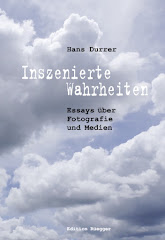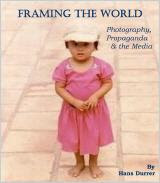Wednesday 24 April 2024
Getting Older
Wednesday 17 April 2024
In Wyoming
Wednesday 10 April 2024
On Sebastião Salgado and Susan Sontag
“Taken in thirty-five countries, Salgado’s migration pictures group together, under this single heading, a host of different causes and kinds of distress. Making suffering loom larger, by globalizing it, may spur people to feel they ought to “care” more. It also invites them to feel that the sufferings and misfortunes are too vast, too irrevocable, too epic to be much changed by any local, political intervention. With a subject conceived on this scale, compassion can only flounder—and make abstract. But all politics, like all history, is concrete”, Susan Sontag writes in “Looking at war”.
True: all politics is concrete, all history is concrete. But is it likewise true that when the subject of sufferings and misfortunes is “conceived on this scale, compassion can only flounder – and make abstract”? Well yes, if one so wishes, if one so decides to ‘see’ it. Except that such ‘seeing’ can be done without looking at these photographs for it is of the “I see what I believe, I see what I want to see”-variety, untroubled by what the photographs actually show. If one however refrains (as best as one can) from interfering in what his/her eyes are showing him/her, if one makes an effort to not let one’s ego get into the way, and, last but not least, if one takes the necessary time to contemplate them then new worlds might reveal themselves – which is still one of the best reasons to look at photographs.
It is with amazement and awe that I look at Sebastião Salgado’s pictures, I marvel at what my eyes show me, and at what I allow them to see. The longer I let these images sink in, the closer I feel to the persons portrayed. Not least because I allow these feelings to become prominent, because I’m willing to experience them. Understanding is a feeling, writes Robert Adams in „Beauty in Photography“. And for understanding to happen, one needs to be ready.
Let us take a photo from „Migrations“
What do I see here? What does this image show me? Where was it taken, and for what purpose? What I see is this: A young, attractive, well-dressed woman with painted lips and painted eyebrows in front of a barrier behind which one can distinguish hands that cling to it as well as faces. I don’t understand what my eyes show me, can’t figure out the context. Is this a prison? What does the woman see? Where is she looking at? The caption says: „The Rodoviario de Tietê bus terminal in São Paulo is the main gateway for new migrants to the city. Every day, hundreds of buses bring people dreaming of El Dorado. This young woman has just arrived from the provinces in her best attire; on the other side of the barrier, people wait for friends or family members arriving in the city to visit or settle. São Paulo, Brazil. 1996.“ Knowing this (for I want to trust these words), I’m beginning to see the picture the photographer has wanted to show me. And now, and only now (because I know now what I’m looking at) this picture can show me more than the famous thousand words could tell. So what does this picture tell me?
What first springs to mind are pictures of the Rodoviarios in Brazil’s Northeast where I had spent some months travelling. Why it is the ones of Recife, Maceío, Natal, and São Luis, the bigger ones, I cannot say. But as soon as I start jotting down the names of these bus terminals, new ones emerge before my inner eye. Teresina, Parnaiba, Fortaleza … it is a movie that I watch, without a plot, only image impressions, seemingly unrelated, in rapid succession; a sense of being lost in the world comes over me.
It does not bother me that the young woman on the photo has no name. I feel drawn to her, identify with her (as I imagine) insecurity, her efforts to show firmness and dignity, her worries and hopes for a good future – I wish I could protect her.
„A portrait that declines to name its subject becomes complicit, if inadvertently, in the cult of celebrity that has fuelled an insatiable appetite for the opposite sort of photograph: to grant only the famous their names demotes the rest to representative instances of their occupations, their ethnicities, their plights” Susan Sontag writes in Regarding the pain of others.
With all due respect: this is nonsense. Not because the young woman on this photo is not representative of her plight yet because she is not only representative but can be perceived, felt, and identified with, as a person.
***
The more I’ve appreciated Salgado’s work (especially his 12-year-project ‘Genesis that aimed at documenting still pristine parts of the world such as the Namib desert or the Galapagos islands), the more critical I’ve judged (some) of Sontag’s views. She deems, for instance, aggressiveness one of the characteristics of Photography. In Plato’s cave, the first of the six essays that constitute “On Photography”, she writes “ …there is something predatory in the act of taking a picture. To photograph people is to violate them by seeing them as they never see themselves. By having knowledge of them they can never have. It turns people into objects that can be symbolically possessed. Just as the camera is a sublimation of the gun, to photograph someone is a sublimated murder. A soft murder, appropriate to a sad, frightened time.”
One can easily agree that „there is something predatory in the act of taking a picture*, especially if one thinks of the pack of professional photographers at the international film festival in Cannes. But the notion that “to photograph people is to violate them” is not only far-fetched, it is simply absurd, as is Sontag’s reasoning (”by seeing them as they never see themselves. By having knowledge of them they can never have.”). Granted, that is subtly observed and it is also true, but what has this to do with violating people? And even if can agree that photos „turn people into objects that can be symbolically possessed“, that is still a far cry from violating them.
There are of course people who use a camera in the way they use a weapon and “to shoot pictures” is a common but (sadly) rarely reflected expression. However, to state that „… as the camera is a sublimation of the gun, to photograph someone is a sublimated murder. A soft murder, appropriate to a sad, frightened time” seems as far off as the French intellectuals that Sontag will years later be scolding (in: Regarding the pain of others) for claiming “that war, like everything else that appears real, was ‘médiatique’”.
Photos
– contrary to paintings – appear strangely real. And although I
know that a photo can only be a photo – René Magritte’s „Ceci
n’est pas une pipe“ makes the point that a picture of a pipe is
not a pipe but a picture of a pipe – this photo of two gemsbok in
the Namib desert (see below) seems more than a photo. It makes me
feel like I was there when it was taken for as much as photos may at
times seem real as much reality at times seems like a photograph.























